The Samsung Galaxy Note5 and Galaxy S6 edge+ Review
by Joshua Ho on October 2, 2015 8:00 AM ESTSystem Performance
While subjective judgments of performance may be possible to make when the delta is significant, when the gap gets increasingly close within the range of perceivable performance differences it becomes important to rely on more precise and accurate methods of measuring the overall performance of the mobile device. For the most part, when we’re discussing system performance the single biggest factor is often the SoC, which makes sense given that an SoC contains the CPU, GPU, video encode and decode blocks, memory bus, and DSPs. There are other aspects of the device that determine the overall perception of performance and things that can have a meaningful effect on performance, but the SoC is often the gating factor.
In order to test this we run mobile devices through our standard suite of benchmarks. In the case of the Galaxy Note5 and Galaxy S6 edge+, there shouldn’t be too many surprises given the commonality in components with the Galaxy S6.
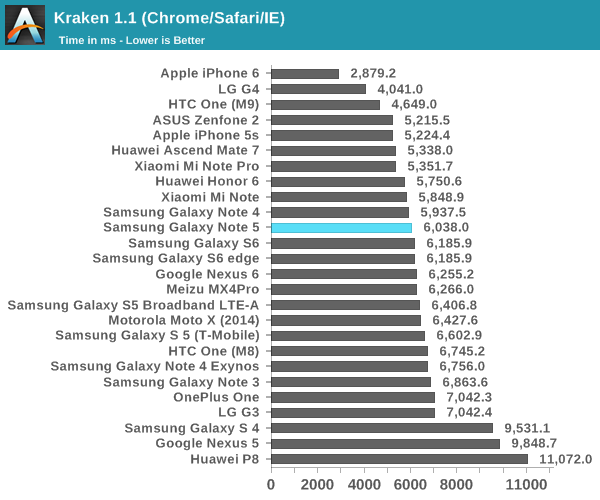
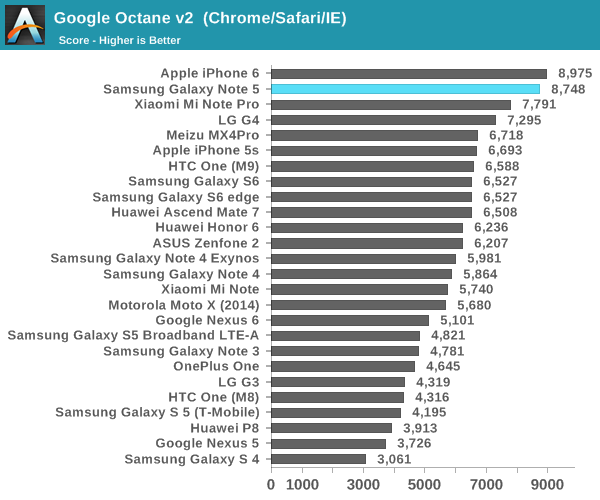
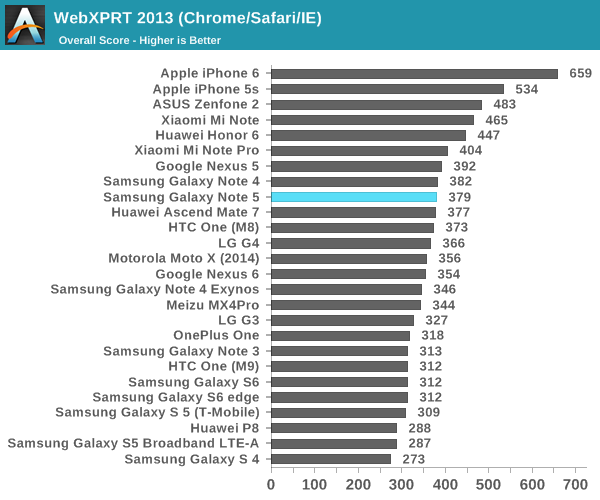
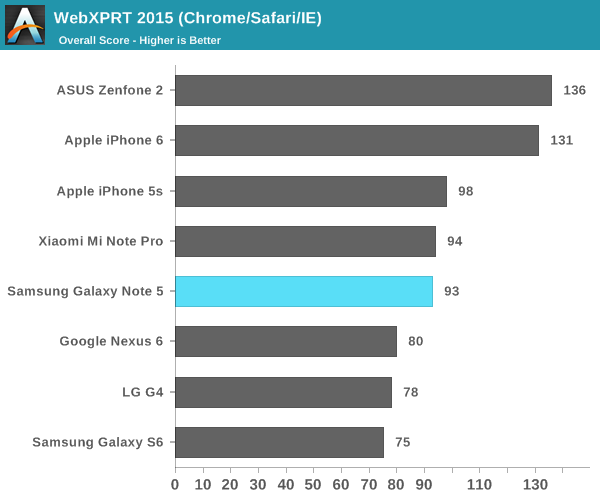

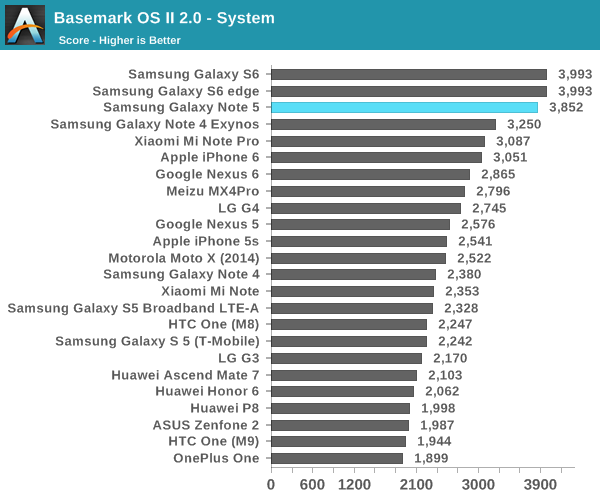
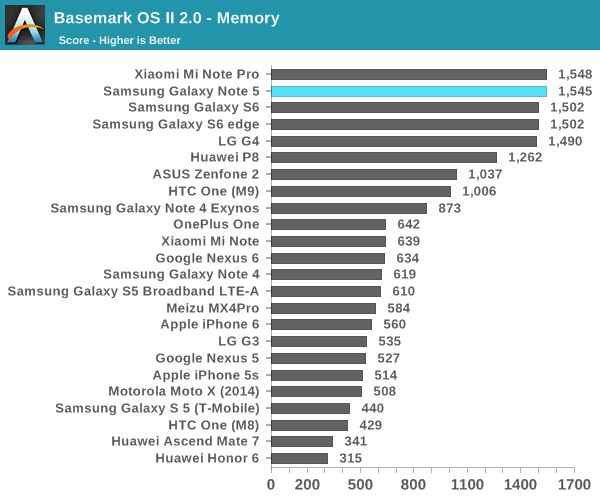
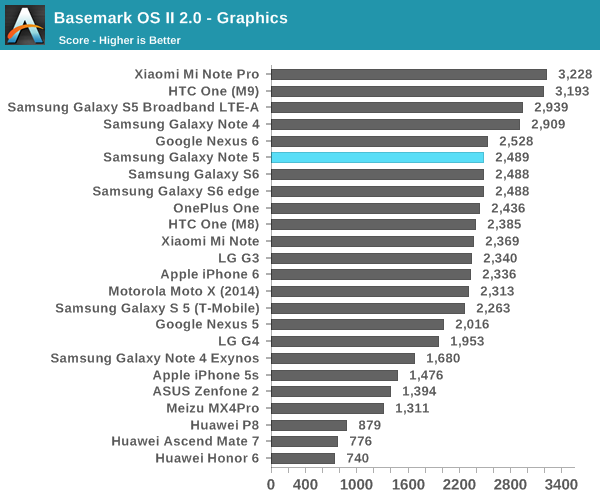

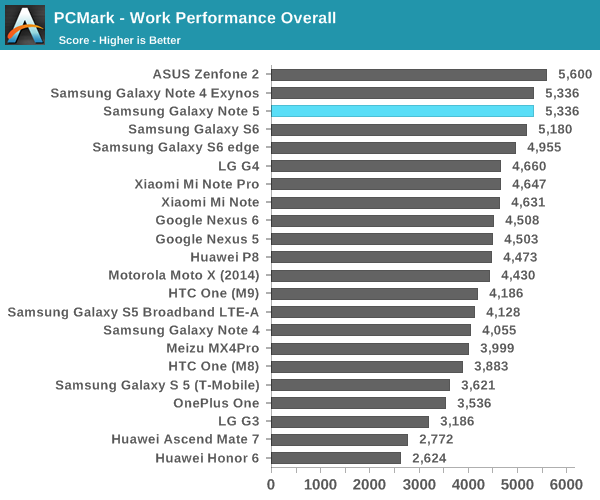

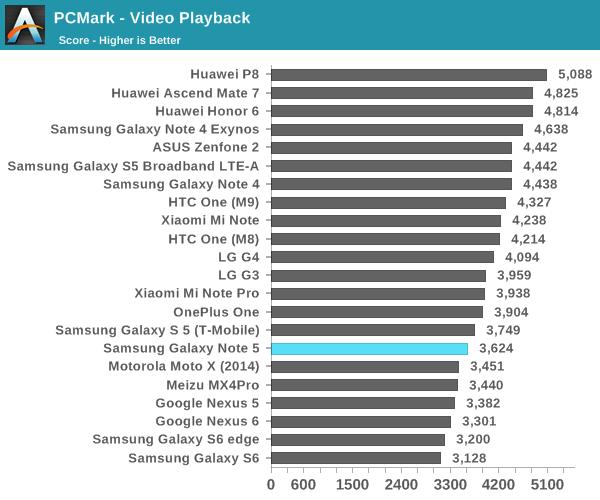
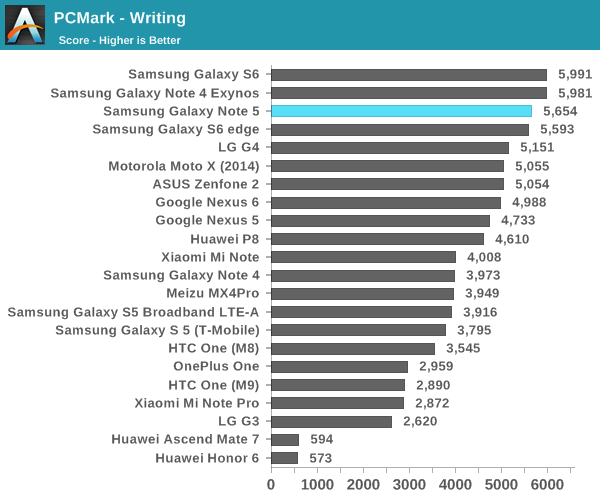
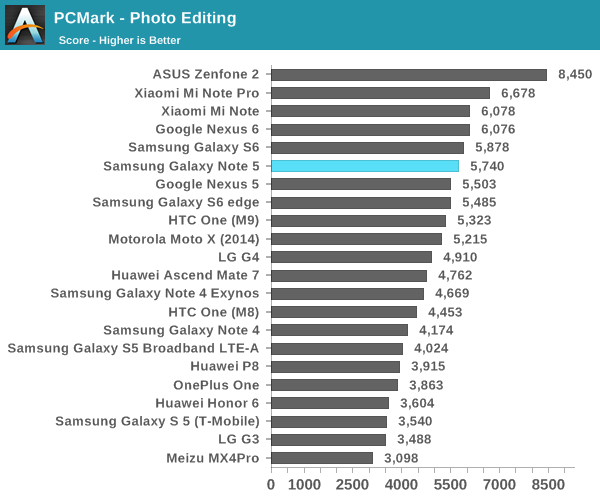
If you guessed that performance in these benchmarks would be similar to the Galaxy S6, you'd be right. Given the shared SoC and general commonality in components performance remains as high as it is with the Galaxy S6. In some cases we see improvements, likely a combination of changes to Chrome and changes to areas like the frequency governor to respond faster to changes in load. It's probably fair to say that the Exynos 7420 will continue to be the best SoC for Android mobile devices in 2015, although it's likely that we'll see significantly increased competition for 2016.










225 Comments
View All Comments
The0ne - Friday, October 2, 2015 - link
WTF, so you want him to voice on something that doesn't exist then? That's just stupid. I bet you use this argument all the time to feel good about yourself. lol. Be easier if you just tell him to not bother in your little fight at all. Makes much more sense.Sttm - Friday, October 2, 2015 - link
Go cry about your real world problems and leave the comments sections of a tech site to us! I'm sure there is a starving kid somewhere that can use your tiny violin services.The0ne - Friday, October 2, 2015 - link
He's not crying, he's laughing at you and the other people bitching about the two companies RATHER than enjoying the devices. You totally misunderstood and misinterpreted his comment. Tech sites needs smart people, please just leave. Take your fanboy arguments elsewhere.And thanks for sharing something a little about your selfish self, all from your stupidity.
melgross - Saturday, October 3, 2015 - link
Oh, shut up!kspirit - Saturday, October 3, 2015 - link
No. >:(generalako - Saturday, October 3, 2015 - link
A more recognized source is the industry standard DisplayMate. Take a look at their tests of the newest Samsung flagships. Ever since the S5, they have been leading in the mark, and ever since the Note 4, their displays have been "considerably better" than the best LCD display (iPhone 6) out there, on virtually every category (contrasts, black levels, efficiency, color accuracy, brigthness, performance in bright lights, viewing angles, sharpness, etc.)http://www.displaymate.com/Galaxy_Note5_ShootOut_1...
Anandtech's test is hard to take seriously when they can't even rate the true peak brigthness of the Samsung phones. They don't even mention that they have left it out of their test! When put on auto brigthness, the Note 4, S6 and Note 5 all get far higher brightness than on manual. The Note 5 can reach 861 cd/m2. That's 50% more than Anandtech claim.
Take a look at DisplayMate's review. They give a proper analysis of the display, which contradicts the Anandtech review on so many areas it's funny.
Peichen - Monday, October 5, 2015 - link
DisplayMate is a Samsung marketing partner. I wouldn't trust it consider them never mention the lackluster AMOLED sub pixel arrangement.MattL - Saturday, October 10, 2015 - link
What the hell are you talking about... first of all read the DisplayMate Samsung review again and search for "Diamond" where they outline the Diamond sub-pixel arrangement. They also have a completely separate article detailing this arrangement (including a zoomed in picture):http://www.displaymate.com/Diamond_29.html
Also in the review in their spec lists they list the sub-pixel count so you can fully compare resolution and sub-pixel counts... hell for their distance in which 20/20 vision can be resolved by the human eye they include stats for the different subpixel counts (which are different per color based on the Diamond arrangement).
How you missed all that I have no clue other than you didn't bother to actually read it.
Also on your first point, Displaymate has been a leader in screen calibration for a long time now... this is their specialty and not the speciality of Anandtech, hence why people take them far more seriously on that topic... it's also why it's a bit surprising Anandtech keeps coming up with different (and less detailed) results, especially when Anandtech doesn't include important values and analysis)... You should really know what you're talking about before you make such a bold response.
Also Displaymate rates the iPhone screens *very* well, just not as a good as Samsung for the past couple generations. You do realize of course that Apple sources their screen manufacturing from a variety of companies... including Samsung, so it makes complete sense that Samsung is doing better when they finally decided to put the resources into it.
Kamus - Sunday, October 4, 2015 - link
On par? You do realize that a Delta below 3 is very much unnoticeable when it comes to gamut and grayscale calibration right?This means that even the galaxy note 4 display smokes any iPhone display to date, because EVERY LCD that has ever been made has downright comical contrast ratio. And OLED on the other hand has the end game in contrast, as in, its perfect.
The only reason this isn't more obvious is because most of the content viewed in smartphones is bright and viewed in very bright environments. Which sort of gives LCDs a free pass since its contrast ratio deficit isn't as obvious as in those situations.
You should know that videophilies spend thousands of dollars on displays that offer even slightly better contrast ratios. And here we have a situation where we go from terrible contrast, to perfect. Watch any sort of dark content on both displays at the same time in a light controled environment and you'll immediately see how these Samsung displays are simply in a whole different league.
Then there's is also the fact that the color gamut is also much wider on OLED, so if the day ever came that we finally decide to stop using the obsolete sRGB standard, OLED would also have an advantage there. (Somethg that had been ironically seen as a disadvantage before they started shiphing phones with color profiles, because the gamut is so wide it results in over saturated colors if a profile isn't is used for sRGB)
I also have to question the brightness results that anandtech got from their unit. Displaymate stated that this is the brightest smartphone display they have ever tested, they get over 800 Nits on their unit. Making it by far the best display you can use under the sun.
To meet it seems obvious that LCD has been surprised in most meaningful metrics, and its only going to get worse for LCD as OLED continues to evolve. LCD has never been good enough, but as it matured it got to a point where it became really good in a lot of ways compared to CRTs (never in contrast or switching times)
TL;DR: these Samsung displays are the benchmark every other display has to be compared to.
thedons1983 - Sunday, October 18, 2015 - link
Yeah, but it's made by Apple, and is pretty much exclusively sold, therefore, to sheep, whom generally have no idea what they are talking about. I'd rather not have a smartphone at all, than one of those ugly ass iphones. But then, that's probably because I actually have taste, and don't just buy whatever hipster rubbish is currently en vogue.